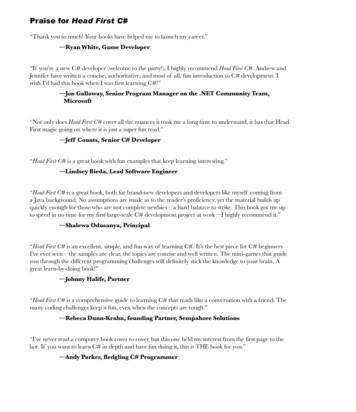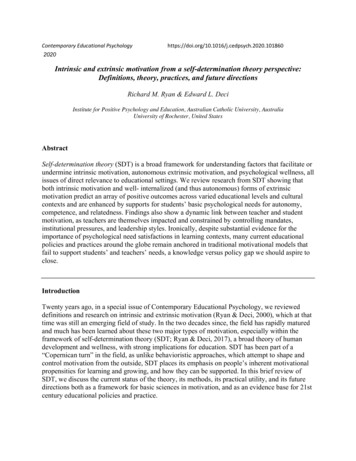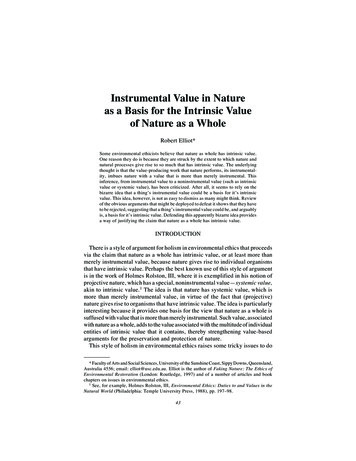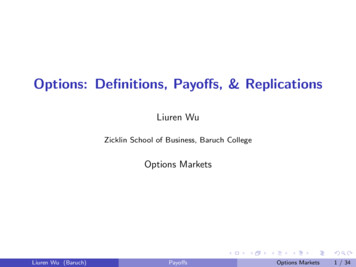
Transcription
Running Head: TEACHER INTRINSIC AND EXTRINSIC MOTIVATIONIntrinsic and Extrinsic Motivation of Elementary TeachersDeborah ScottHarmony School of Science - AustinHarmony Public Schoolsdscott@harmonytx.orgMaster of Educational LeadershipDepartment of Educational Leadership and Policy StudiesThe University of Texas at TylerSummer 20171
TEACHER INTRINSIC AND EXTRINSIC MOTIVATION2AbstractThe purpose of this research paper was to answer the question "Does an intrinsic drive orextrinsic rewards motivate elementary teachers?" The design of this study utilized quantitativemethods through an anonymous Likert scale 10 question survey, 5 intrinsic and 5 extrinsic, givento elementary teachers at Harmony School of Science - Austin. The overall trend in the resultswas a split between the two motivators; 86% intrinsic and 75% extrinsic were both effective forelementary teachers. However, the average intrinsic motivation was 11% higher making asignificant jump. In fact, there were two intrinsic questions that yielded 100% results whereas,extrinsic factors did not yield any unanimous replies. In conclusion, the results of this researchhave the potential to help school administrators become more aware of the factors that affectteacher motivation and recommends practices such as hiring intrinsically motivated individualsand providing extrinsic rewards.
TEACHER INTRINSIC AND EXTRINSIC MOTIVATION3IntroductionFinding ways to maintain and increase teacher motivation is a challenge for most schoolleaders. In general, the teaching profession has many factors that impact job satisfaction. Therole of teaching is not just the passing of knowledge from one human to another. Teachers alsowork harder than ever to teach social skills, appropriate behaviors, and meet the requirements oflearners with unique needs; doing more and more with decreasing resources provided by thestate. The need to address teacher motivation is in part due to the teacher shortage reported bymany Western countries including the United States, Australia, and European nations such as theUnited Kingdom, Germany and Norway (Kyriacou & Kunc, 2007). Texas in particular isexperiencing a dramatic shortage of certified teachers, and this assertion is consistentlysupported by the NCLB highly qualified teacher data.Teacher motivation is the foundation for every great school. If all the staff is excited to bethere, they have a common goal and can work together to ensure student achievement. Motivatedteachers create classroom environments that use situational motivation to directly impact studentlearning. This is important because a motivated teacher goes hand in hand with student success,which is the ultimate goal of every school. Motivation is defined as the willingness of someoneto do something, however, since everyone is unique, not everyone will be motivated in the sameway or to the same degree. Therefore, it's imperative to untangle the web of human behavior tounderstand how best to motivate each teacher, and this is what this research study will attempt toreveal.Are teachers motivated by an intrinsic drive or extrinsic rewards? Intrinsic motivation isdefined as the undertaking of an activity, as a hobby, without external incentive; and also
TEACHER INTRINSIC AND EXTRINSIC MOTIVATION4personal satisfaction derived through self-initiated achievement. Extrinsic motivation refers tobehavior that is driven by external rewards such as money and praise.The hypothesis is that teachers are intrinsically motivated, because teaching is a callingand the extrinsic reward of a high salary does not exist. Veteran teachers often speak with greatpassion for their profession, considering the joys in seeing a student learn and the students’desire to learn more as some of their best rewards. They do not put much value on accoladessuch as trophies, job titles, or time off, because even during their time off, they are still spendingtheir time working in some form of teaching. Finding ways to motivate, engage, and increaseteacher productivity is essential to retaining teachers in a profession that is progressivelydeclining in numbers.Literature ReviewTeacher MotivationA plethora of research affirms the importance of keeping teachers motivated so they inturn will keep our precious future leaders, our students, on track and striving for greatness. Whatexactly motivates our teachers though, is it an intrinsic drive or extrinsic rewards? The literaturewas split in their findings.IntrinsicThe following first five of ten sources point to an intrinsic source. Employees withdiminished motivation need to "name the real problem" (p. 21) and "look below the surface"(p. 22). Hence, this is an intrinsic cure according to Loehr and Kaye (2011). Principal NadiaLopez (2016) thinks extrinsic rewards will never be enough to create a great teacher. In fact shetells her staff, "If you're counting how many hours you're supposed to work and are moreconcerned about your check than you are about children, you gotta go. You just have to go" (p.
TEACHER INTRINSIC AND EXTRINSIC MOTIVATION546). Pink (2009) does not mince words when he states the three elements of true motivation are"autonomy, mastery, and purpose" none of which can be given extrinsically (p. 1).Covey (2008) lists the most important motivating factors for teachers. "Teachers want toenjoy a sense of dignity and pride in their profession. They want to be treated with respect. Theywant good collegial relationships. They want to be organized and to feel some semblance ofcontrol over their time and what happens in their classroom. They want their talents utilized anddeveloped" (p. 36). Also, Hewertson (2014) believes we need to identify personal values whichare "intrinsically most important" because these are our "greatest source of joy when you areliving them, and your greatest source of unease when you are not" (p. 110). Friedman's (2014)answer is slightly mixed but starts out extrinsic by acknowledging workers do respond to raisesin pay but ultimately it's the recognition specifically "the respect that comes along with it" whichis the true key to motivation (p. 158).ExtrinsicNow for the opposing viewpoint, these authors believe teachers are motivated mostly byextrinsic rewards. Daniels (1994) has an entire section dedicated to the "astonishing power ofpositive reinforcement" (p. 25) as well as the strength of "compensation as reward" (p. 148)."Hold contests, host teacher appreciation events, and give praise" are wholly extrinsicsuggestions to increase motivation by Granata (2016, para. 2, 4, & 5). Hosler (2013) thinks ifteachers are paid "what they deserve" (para. 6) it would increase motivation. Lastly, Roberts(2014) says teachers need to stay motivated by taking care of themselves by learning somethingnew as well as having down time, exercising, eating healthy, meditating, and my favorite, "dosome action research" all to avoid burnout (para. 9).
TEACHER INTRINSIC AND EXTRINSIC MOTIVATION6The literature was chosen because it addressed the topic of teacher motivation, however, Ifound it fascinating that the research literature was almost split in half as to whether it is due toextrinsic or intrinsic means. This puts even more focus on my research to determine how best toserve our teachers who in turn keep that spark of inquiry lit in our student's eyes!MethodologyParticipantsThe researcher developed and administered an anonymous ten-question closed-endedsurvey sent to all teachers on the campus, Harmony School of Science - Austin. Twenty-twoteachers completed the online survey out of all thirty teachers who are employed here. Surveyswere distributed electronically; it opened May 22nd and closed on June 19th via Survey Monkey.MaterialsA 10 question Likert scale survey was designed to elicit responses regarding teachers'perspectives on intrinsic and extrinsic motivation. Participants had the option of answering thesurveys ten questions with one of the following choices; strongly agree, agree, disagree orstrongly disagree. Half of the questions were indicative of intrinsic motivators and the other halfextrinsic (See survey in Appendix A).ProcedureThis action research study utilized quantitative methods through a closed-ended Likertsurvey to find out if teachers are motivated by an intrinsic drive or extrinsic rewards. Theanonymous surveyed was administered via school email with a link to Survey Monkey, whichthen alerted me on the due date. The surveys were collected by logging in and viewing the finalresults. Confidentiality was secured several ways through the options in Survey Monkey
TEACHER INTRINSIC AND EXTRINSIC MOTIVATION7software; Anonymous Response Choice was on, Track IP Address was off, Track EmailInvitations was off and it was sent over a secure SSL encrypted connection.Analysis of DataThis research study was conducted in the Spring of 2017 by anonymously surveyingteachers at Harmony School of Science - Austin, a Kindergarten through 5th grade campus. Ofthe 30 teachers employed on the campus, 22 (73%) completed the survey in Appendix A. Thesesurveys ascertained teachers' views on intrinsic and extrinsic motivators. The results weretabulated and percentages calculated in response to the survey questions.ResultsThe survey was designed so that the first question was an intrinsic motivator and thesecond extrinsic; each question alternated like this for the entire survey. For all the intrinsicmotivation questions it was a landslide of two questions with 100% agreement, others with 86%,82%, and 63%. Regarding extrinsic motivation questions the results were 95%, 86%, two with73%, and a split of 50%.Thus, resulting in an average of 86% agreement for the intrinsic and 75% for the extrinsicmotivators. Interestingly, the overall Strongly Agree category for intrinsic was 48% whereas, itwas only 24% for extrinsic factors which implies the teachers are twice as strongly driven byintrinsic forms. When teachers were asked if they enjoyed looking for fun ideas after work hours,approximately 62% agreed or strongly agreed, whereas 38% disagreed or strongly disagreed.Making intrinsic the winner for this first question.
TEACHER INTRINSIC AND EXTRINSIC MOTIVATIONOne hundred percent of teachers agreed or strongly agreed with the statement, "One of the bestthings about teaching is seeing the students learn." Intrinsic is the unanimous winner for thisquestion!8
TEACHER INTRINSIC AND EXTRINSIC MOTIVATIONAnother 100% agreement with the statement, "I want my students to learn more." Againsupporting the intrinsic motivation factor.When teachers were asked if most days they are not happy that they have to go to work,approximately 82% disagreed or strongly disagreed, whereas 18% agreed or strongly agreed.Also making intrinsic the winner for this first question.9
TEACHER INTRINSIC AND EXTRINSIC MOTIVATIONTeachers responded that they set tougher standards for themselves than the school does;approximately 86% agreed or strongly agreed, whereas 14% disagreed or strongly disagreed.Intrinsic motivation is the clear winner for this question.When asked if they should receive rewards more often because they would try to earn them;approximately 73% of teachers agreed or strongly agreed, whereas 27% disagreed. Whichstrongly supports an extrinsic motivation.10
TEACHER INTRINSIC AND EXTRINSIC MOTIVATION11When teachers were asked if they should be paid based on experience; approximately 86%agreed or strongly agreed, whereas 14% disagreed or strongly disagreed. Which may support anextrinsic motivation.When asked if they should be put on an improvement plan if not successful; approximately 95%of teachers agreed or strongly agreed, whereas 5% disagreed.
TEACHER INTRINSIC AND EXTRINSIC MOTIVATION12Teachers who were asked if they would work harder if they could earn bonus pay; approximately73% agreed or strongly agreed, whereas 27% disagreed or strongly disagreed.When asked if part of the reason they became teachers was so they could have the summers off;responses were split 50/50 between the disagreements and agreements.
TEACHER INTRINSIC AND EXTRINSIC MOTIVATION13Discussion and ConclusionsThis purpose of this action research study was to understand the type of motivation forelementary teachers grades Kindergarten through fifth grade at Harmony School of Science Austin. Although the sample was small (22) the quantitative methods (survey) producedinteresting and usable data for program improvement efforts and provided new information toresearchers in the field regarding teacher reports of motivation.The findings are mostly similar to the ones mentioned in the literature review that alsoshows an overall trend is a split between the average of the two motivators; 86% intrinsic and75% extrinsic are both effective for elementary teachers. However, intrinsic motivation's 11%higher average is significant. In fact, there were two intrinsic questions that yielded 100% resultswhereas extrinsic factors did not yield any unanimous replies. The other intrinsic questionsresults were quite strong with 86% and 82%.
TEACHER INTRINSIC AND EXTRINSIC MOTIVATION14New insights from this research are extrinsic is not as powerful a motivator; the finalquestion only yielded a 50% agreement result. There were also two extrinsic survey results,which were barely passing both with 73%. The extrinsic survey result with the highest agreementof 95% for "teachers who are not successful should be put on an improvement plan" should bevery telling to Administration that teachers deeply care about quality of instruction. Another newinsight is only 40% of the extrinsic questions were above 73% compared to 80% for intrinsicquestions, thus implying a much stronger push for internal motivators.The hypothesis was correct that teachers are intrinsically motivated, because it is a callingand the extrinsic reward of a high salary does not exist. Veteran teachers often speak with greatpassion for their profession, considering the joys in seeing a student learn and the students’desire to learn more as some of their best rewards. They do not put much value on accoladessuch as trophies or job titles.Limitations of the StudyThis action research project was a single case study at one charter school in Texas, whichis a limitation of the study. Another limitation was the small size of the survey respondents (22),which limits the ability to generalize to other schools.Implications for Educational LeadershipSurvey data provided significant information for our campus regarding teachermotivational improvements to implement in the upcoming school year. Teachers are greatlymotivated by intrinsic forces. However, since teaching is a demanding profession teachers needto also have extrinsic motivators to keep them focused. Therefore, the best hiring methods wouldincorporate identifying individuals who are intrinsically motivated so they will put forth theirbest effort on a daily basis. This might include the use of a brief online psychology test to aide in
TEACHER INTRINSIC AND EXTRINSIC MOTIVATION15the hiring process to determine which candidates score highest from a self motivated perspective.As well as simply asking the applicants what motivates them as part of the interview.Administration should be mindful of supporting our teachers with numerous smallmonetary motivators such as weekly low-cost gift cards for teachers who have creative,interactive lessons or whatever desired action is being sought. This may further inspire thoseteachers to be recognized as well as motivate others to push themselves too. A few large rewardscan be given such as to recognize and celebrate goals during staff meetings. Seventy-threepercent of teachers said they would work harder for bonus pay; give it to them and see resultssoar!We often see high spirits in the beginning of the school year which seems to wane as thetime marches onward, so we need to have ongoing competitions to keep moral at a high level.This is not just for the teachers; the ultimate goal is to give our students the best possible learningenvironment every day of the school year in order to help students meet their goals.Implications for Further ResearchThere were a number of implications for future research. First, even within our Harmonyschool district, further research should be done with a greater number of teachers to see if theseinitial results are maintained with a larger group. Results might differ across number of yearshaving taught and this might be an important factor in planning future program improvementsand activities. Also, further research should look at Secondary teachers, as well as, comparingthe results of the two groups. Harmony School of Science - Austin is a public school in an urbansetting; it would be interesting to compare results with private schools and rural districts.Extending the data to interviews in addition to surveys to get more in depth thought on thesubject would be yet another future research implication. Finally, it would be fascinating to
TEACHER INTRINSIC AND EXTRINSIC MOTIVATIONcompare these results with those from a country where teachers are considered to be highlyvalued.16
TEACHER INTRINSIC AND EXTRINSIC MOTIVATION17ReferencesLoehr, A. & Kaye, J. (2011) Managing the unmanageable: How to motivate even the mostunruly employee. Pompton Plains, New Jersey: Career PressDaniels, A.C. (1994). Bringing out the best in people: How to apply the astonishing power ofpositive reinforcement. New York, New York: McGraw-HillFreidman, R. (2014). The best place to work: The art and science of creating an extraordinaryworkplace. New York, New York: Perigee BookLopez, N. & Paley, R. (2016). The bridge to brilliance: How one principal in a tough communityis inspiring the world. New York, New York: Viking, an imprint of Penguin RandomHousePink, D.H. (2009). Drive: the surprising truth about what motivates us. New York, New York:Riverhead BooksCovey, S.R. (2008). The leader in me: how extraordinary, everyday schools are inspiringgreatness, one child at a time New York, New York: Free PressHewertson, R. (2014). Lead like it matters.because it does: Practical leadership tools to inspireand engage your people and create great results. Retrieved from verdrive.com/?p svadzcLiPXIyuPSRyesGgGranata, K. (2016, December 4). Eight ways administrators can motivate teachers. Retrievedfrom http://www.educationworld.com/Eight Ways Administrators Motivate TeachersHosler, A. (2013). Six ways to really motivate teachers. Retrieved fromhttp://www.educationworld.com/a admin/six-ways-motivate-teachers.shtml
TEACHER INTRINSIC AND EXTRINSIC MOTIVATION18Roberts, R. (2014, June 4). Staying motivated and avoiding burnout as a teacher. Retrieved ng-burnout-a-teacher
TEACHER INTRINSIC AND EXTRINSIC MOTIVATIONAppendix ATeacher Motivation Survey1. I enjoy looking for fun lesson ideas after work hours.Strongly DisagreeDisagreeAgreeStrongly Agree2. Teachers should receive rewards more often because I would try to earn them.Strongly DisagreeDisagreeAgreeStrongly Agree3. One of the best things about teaching is seeing the students learn.Strongly DisagreeDisagreeAgreeStrongly Agree4. I think teachers should be paid based on experience.Strongly DisagreeDisagreeAgreeStrongly Agree5. I want my students to learn more.Strongly DisagreeDisagreeAgreeStrongly Agree6. Teachers who are not successful should be put on an improvement plan.Strongly DisagreeDisagreeAgreeStrongly Agree7. Most days I am not happy that I have to go to work.Strongly DisagreeDisagreeAgreeStrongly Agree19
TEACHER INTRINSIC AND EXTRINSIC MOTIVATION208. I would work harder if I could earn bonus pay.Strongly DisagreeDisagreeAgreeStrongly Agree9. I set tougher standards for myself than the school sets for me.Strongly DisagreeDisagreeAgreeStrongly Agree10. Part of the reason I became a teacher was so I could have my summers off.Strongly DisagreeDisagreeAgreeStrongly AgreeAppendix BLetter to ColleaguesMay 25, 2017Dear Colleagues,I am currently seeking a Masters of Educational Leadership and Principal Certificationthrough the University of Texas at Tyler. A crucial component for completing this program isconducting an original educational research study. I have chosen to evaluate what keepsteachers motivated at our campus, Harmony School of Science - Austin. My goal is to improvemotivation in the school by enacting procedures based on the data collected in this project. It ismy belief that high faculty motivation is connected to providing the best learning environmentfor students.This research will gather data from teachers on our campus. You will be asked tocomplete a survey that consists of questions designed to determine the extent and types ofmotivators. The survey will be available at https://www.surveymonkey.com/r/QT6BV3VPlease take a few minutes to complete the survey.All personal information and responses for teachers is confidential as this survey iscompletely anonymous. No names or emails will be included in the final research report andappropriate confidentiality protocols will be followed.Thank you for taking part in this research project. Your assistance is greatly appreciatedand valued. If you have any question or concerns, please feel free to email or call. My contactinformation is listed below.Thank you,Deborah Scott
TEACHER INTRINSIC AND EXTRINSIC MOTIVATIONHarmony School of Science - Austin21
46). Pink (2009) does not mince words when he states the three elements of true motivation are "autonomy, mastery, and purpose" none of which can be given extrinsically (p. 1). Covey (2008) lists the most important motivating factors for teachers. "Teachers want to enjoy a sense of dignity and pride in their profession.
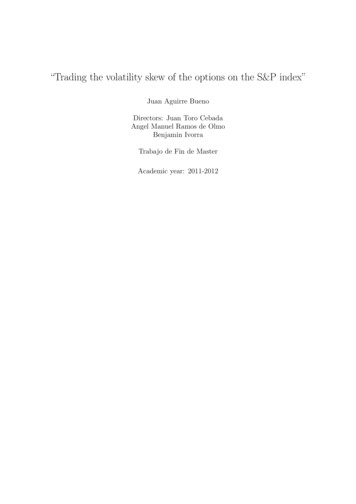
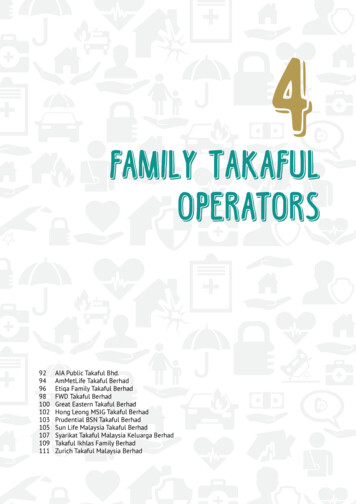
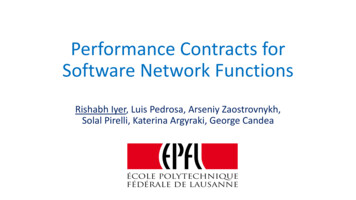

![Drawing the Human Head Burne Hogarth[English] - Internet Archive](/img/29/drawing-the-human-head-burne-hogarth-english.jpg)
